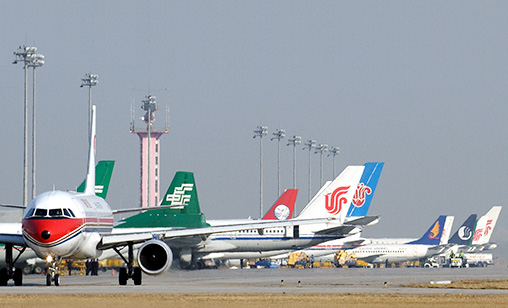Special Reports: Aircraft Leasing
Gains from pandemic pain on horizon for aviation lessors
Aircraft lessors have had to dramatically adjust their business to cope with customers who have seen their finances battered by the pandemic. Many of them also have suffered losses lending support to expected consolidation in the sector. But for those who survive crisis, there is good reason for them to look forward to a golden future, reports associate editor and chief correspondent, Tom Ballantyne.
October 1st 2021
Forecasts of the growth in the aircraft leasing industry in the next few years vary wildly but whichever way you look at it, there is little doubt it is going to be a great business to be in. Read More »
According to a recent report from Market Research Future, with principal offices in the U.S. and the UK, the global aircraft leasing market is set to reach $62 billion in value by 2023, registering 4.75% annual growth.
 |
And it gets better. In April this year, Statista, a Hamburg-based provider of market and consumer data, predicted the aviation leasing market will be worth $473.6 billion in 2026. Yet another forecaster, New York-based Polaris Market Research, said that by 2028 the global aircraft leasing market size will reach $539.68 billion.
What analysts do agree is that leasing will be a growing percentage of the operating fleets of airlines. Indeed, the expansion of aircraft leasing has been exponential. In 1970, only 0.5% of airline fleets were leased. In 2020 that figure had risen to 46%. Clearly, as airlines recover from the pandemic and strive to restore balance sheets that have suffered billions of dollars in losses sale and lease back deals with lessors and acquisition of new aircraft directly from lessors is likely to grow even more dramatically.
Page Executive, a division of UK-headquartered consultants, the Page Group, said: “most airlines are hesitant to purchase aircraft of their own — and for good reasons. A single B777-9, for example, can cost up to $409 million. It makes more economic sense for airlines to rent these aircraft”.
“Not only does this increase the number of aircraft in the fleet, it does so without incurring a crushing financial burden on the airline in the long run.”
The Asia-Pacific has been playing an increasing role in the expansion of the leasing sector. Since 2011, there has been a significant increase in demand from Asia Pacific-based airlines, particularly from China, India, Vietnam, Indonesia, and the Philippines, Page said.
“Since 2010, Asian banks, equity and debt capital markets, as well as the asset-backed securities market have played a major role in the aircraft leasing industry’s strategic importance. As for the scale, there were about 800 airlines globally in 2018 and they will require more than 45,000 new aircraft in the next 20 years. Secondly, in terms of investors and funding, there are above 350 aircraft lessors, at least 200 active banks and above 1,000 capital market investors.”
The aircraft leasing industry’s centre of gravity has certainly shifted towards the Asia Pacific. Most of the top 20 lessors have reported 50% or more of their global revenues are generated from the region. And while Dublin was once regarded as the global hub for aircraft leasing, that mantle is shifting to centres such as Singapore, Hong Kong, Beijing and Shanghai.
Norah Clark says:
January 11th 2022 10:39pm